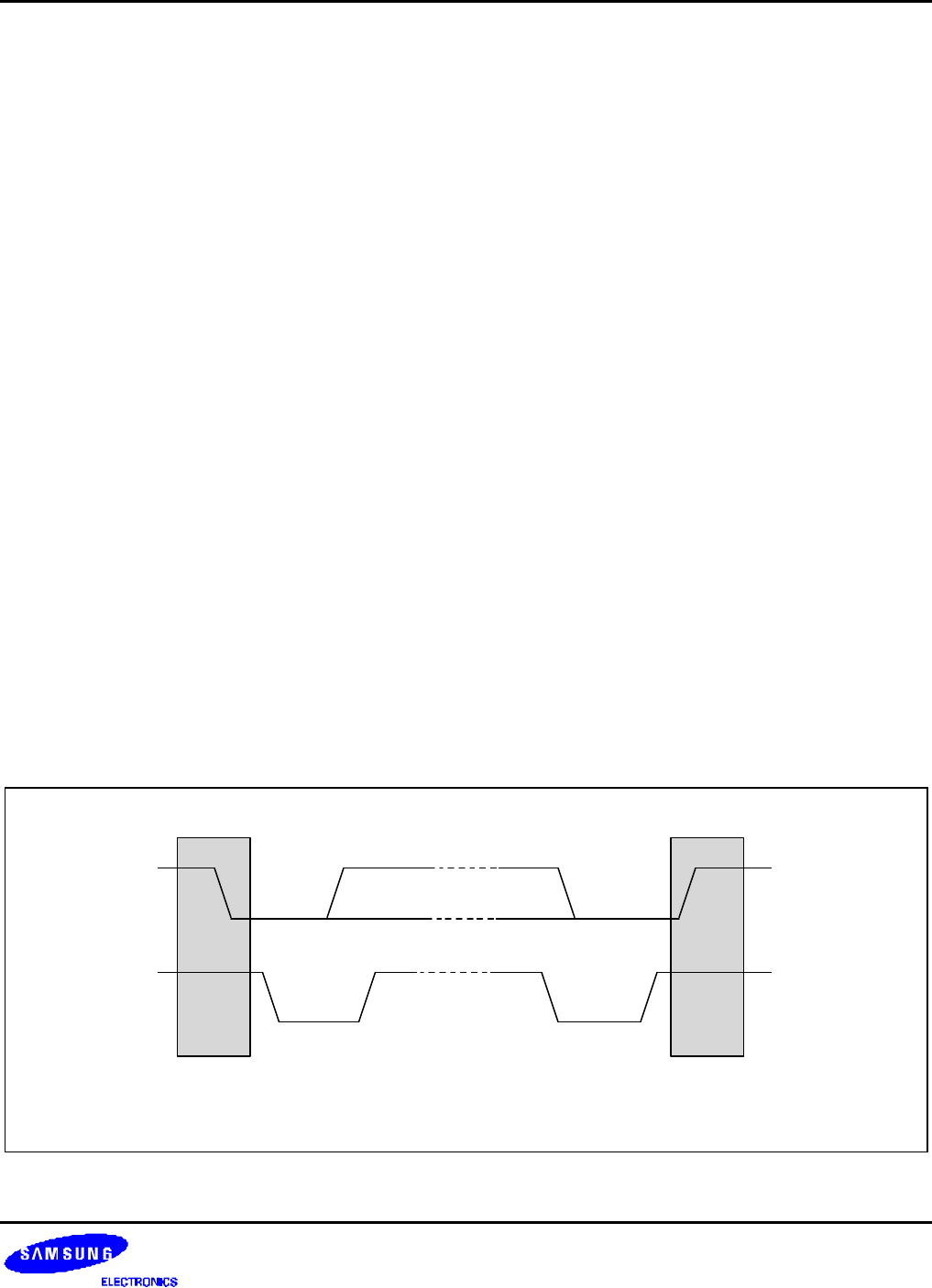
S3C2410A IIC-BUS INTERFACE
20-3
IIC-BUS INTERFACE
The S3C2410A IIC-bus interface has four operation modes:
— Master transmitter mode
— Master receive mode
— Slave transmitter mode
— Slave receive mode
Functional relationships among these operating modes are described below.
START AND STOP CONDITIONS
When the IIC-bus interface is inactive, it is usually in Slave mode. In other words, the interface should be in Slave
mode before detecting a Start condition on the SDA line (a Start condition can be initiated with a High-to-Low
transition of the SDA line while the clock signal of SCL is High). When the interface state is changed to Master
mode, a data transfer on the SDA line can be initiated and SCL signal generated.
A Start condition can transfer a one-byte serial data over the SDA line, and a Stop condition can terminate the data
transfer. A Stop condition is a Low-to-High transition of the SDA line while SCL is High. Start and Stop conditions
are always generated by the master. The IIC-bus gets busy when a Start condition is generated. A Stop condition
will make the IIC-bus free.
When a master initiates a Start condition, it should send a slave address to notify the slave device. One byte of
address field consists of a 7-bit address and a 1-bit transfer direction indicator (showing write or read).
If bit 8 is 0, it indicates a write operation (transmit operation); if bit 8 is 1, it indicates a request for data read (receive
operation).
The master will finish the transfer operation by transmitting a Stop condition. If the master wants to continue the data
transmission to the bus, it should generate another Start condition as well as a slave address. In this way, the read-
write operation can be performed in various formats.
SCL
SDA SDA
SCL
Start
Condition
Stop
Condition
Figure 20-2. Start and Stop Condition


















